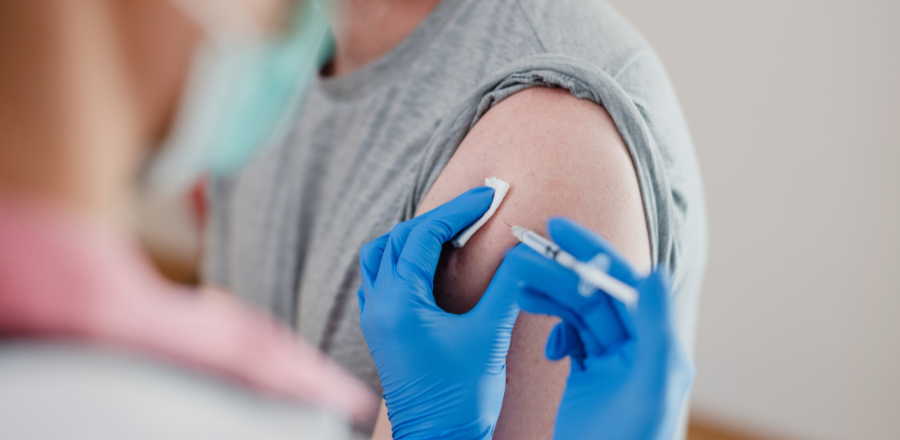The recent high-profile Australian deaths attributed to heart disease are a deeply upsetting reminder that cardiovascular disease continues to have a devastating toll. For every person that suffers a heart attack, many more are left to deal with the impact, pain and suffering of heart disease.
Already, after the sudden death of Australian cricketing legend, Shane Warne, due to a suspected heart attack, there are reports of more men in their 50s asking their doctors to check out their heart health. Something that’s being called the ‘Shane Warne effect‘.
Just a week later, the sudden death of Labor senator Kimberley Kitching of a suspected heart attack aged just 52 led to further health warnings about heart disease in women.
So, it’s timely to reflect that despite the great inroads we’ve made in tackling cardiovascular disease, the health burden is still enormous.
With one person dying every 12 minutes in Australia because of a cardiovascular event, we must work to ensure lessons are learned from these early deaths lessons and continue raise awareness that will help us drive down morbidity and mortality rates.
As a cardiologist, I am privileged to help patients with suspected or established heart disease daily.
Many times, my only intervention is to provide reassurance, general lifestyle advice and guidance.
But when problems develop, the most common cause is the build-up of cholesterol fatty plaques within the walls of the arteries around the heart. This process, called atherosclerosis, usually takes many years to develop and the chronic nature of the condition provides several opportunities along the way to diagnose and intervene at an early stage.
Some of the potential risk factors that have been linked to the build-up of these plaques and artery blockages are an excellent target for both lifestyle and pharmacologic treatments which can help control and limit the impact on a person’s overall health and well-being.
The traditional risk factors are often divided into modifiable and non-modifiable ones. Modifiable risk factors are ones you can take measures to change, while non-modifiable ones are those you cannot change.
Non-modifiable risk factors include being male, advancing age and a family history of premature cardiovascular events, typically in close (or first-degree) relatives aged under 60 years of age.
Among some men here in Australia, there remains a ‘she’ll be right’ approach, often dismissing symptoms as non-cardiac, which can result in unnecessary delays in seeking medical attention.
Sometimes this approach can end up being the right one, but it’s crucial that both men and women who have any worrying symptoms are looked at by a health care professional who is in the best position to assess the situation and arrange any further investigations or referral to a cardiologist.
So, what should people be aware of when it comes to the health of their heart?
Well, any feeling of tightness, pressure, pain or discomfort around the chest region that may radiate to the arm or jaw, or the sudden onset of significant shortness of breath, warrants urgent attention and a call to local emergency services.
Symptoms like these may be because of a blood clot forming within the heart artery and the sooner urgent and proven treatments can be given, the better the outcomes.
If we look at modifiable cardiovascular risk factors, managing these remains the cornerstone pillar of tackling cardiovascular disease and the core of our primary and secondary prevention strategies.
Where we can make great inroads is in better controlling elevated blood pressure, optimising control of blood sugars for people with diabetes, reducing and (ideally) completely quitting smoking and managing raised blood cholesterol levels.
All of these modifiable cardiovascular risk factors have a strong link to future cardiac events.
In looking at the burden of cardiovascular disease, we must also look at the role of the current COVID-19 pandemic.
From the impact of the virus itself on the heart, to the rare but recognised cardiac risks following mRNA vaccination, the pandemic has had a significant detrimental influence on cardiovascular outcomes.
In addition to these direct links, the pandemic and associated long lockdowns, have resulted in increasing cardiovascular risk factors like physical inactivity, eating badly, smoking and alcohol misuse. The toll on our mental health and wellbeing also can’t be ignored.
The lockdowns many of us endured that aimed to reduce the spread of the virus and contain outbreaks has had the unintended effected of people becoming more reluctant to seek prompt medical attention. This delay can result in far more advanced cardiac conditions when they eventually present with increased morbidity and mortality risk.
One of the most rewarding aspects of my work is that, in partnership with the patient and their primary health carer provider, we can work towards providing that much-needed reassurance and an explanation of any suspicious symptoms they may have experienced.
On a good day, this may mean telling them they have nothing to worry about. But if we do diagnose heart disease, there are many treatments and options available that can help going forward.
From a community viewpoint, education programs and health promotion can help deliver evidence-based strategies that raise awareness and reduce the burden on patients, their families and society.
So, as many Australians mourn the untimely deaths of Shane Warne and Kimberley Kitching – as a cardiologist, I hope there may be some comfort in the fact that their legacy may be to help save the lives of others.








